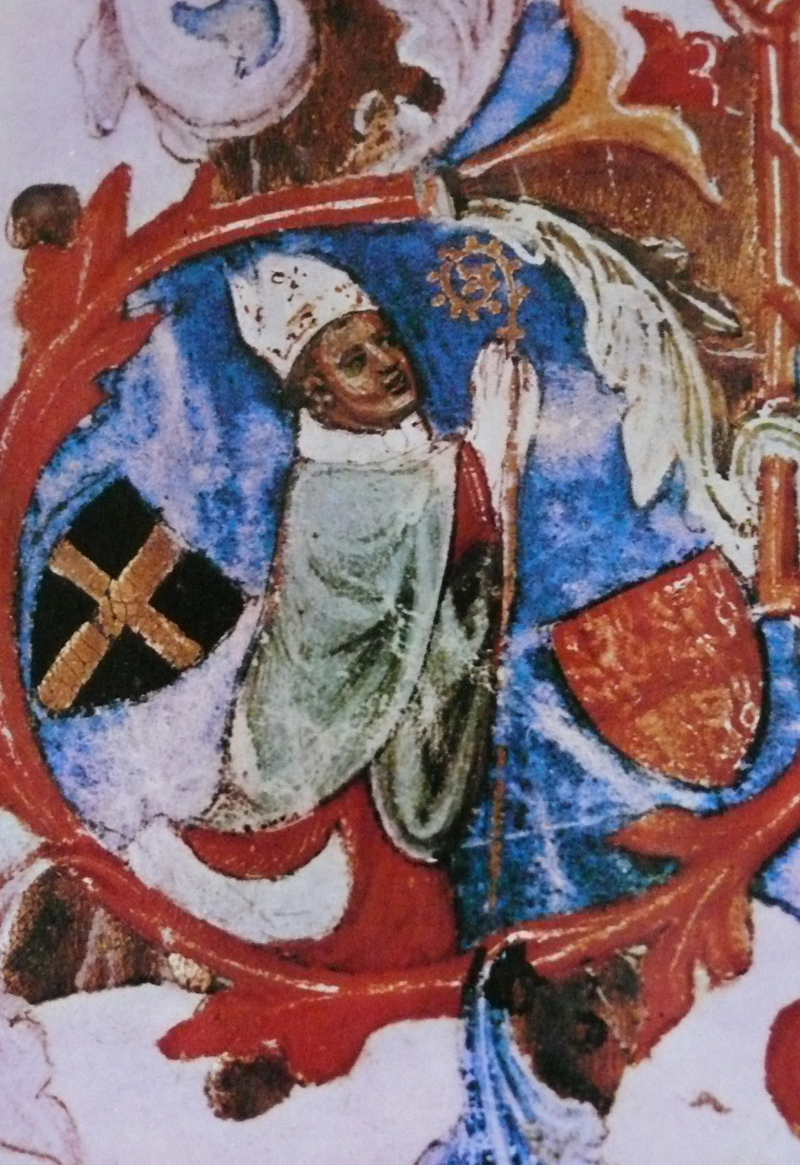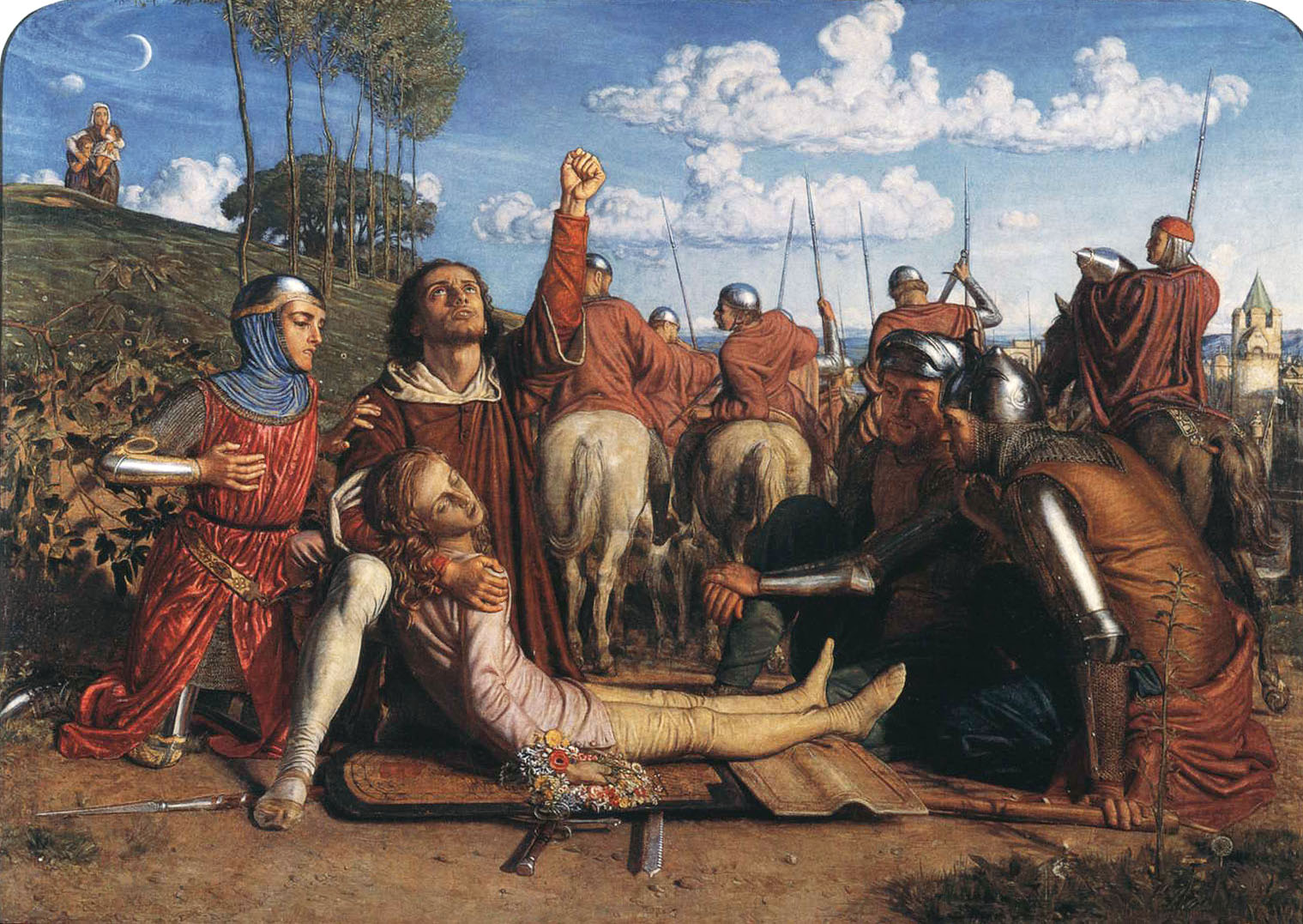|
John Of Neumarkt
John of Neumarkt also Johannes von Neumarkt ( la, Ioannes de Novo Foro, cs, Jan ze Středy; 1310 in Neumarkt – 24 December 1380 in Modřice, Moravia) was Chancellor of Emperor Charles IV, appointed Bishop of Naumburg, Bishop of Litomyšl, Bishop of Olomouc and elected Bishop of Wroclaw. He was also known by his humanistic works. Life His bourgeois parents were Nicholas and Margaret. His brother Mathias was a Cistercian monk and Auxiliary Bishop of Litomyšl and later of Wroclaw. An older sister was married to Rudolf Richter in Vysoké Mýto (german: Hohenmauth). Their son 1394 was Dean of the Charles University. John studied probably in Italy. Its promoters were Nikolaus von Pannwitz, curator of the Wrocław Cathedral Chapter, and Wolfram von Pannwitz, Viscount of Glatz. For 1340 John is as a notary of Ziębice Duke Bolko II. Proved. Presumably as a sinecure he received the parish Neumarkt, which he was allowed to keep with the permission of the Wroclaw Bishop Preczla ... [...More Info...] [...Related Items...] OR: [Wikipedia] [Google] [Baidu] |
Kroměříž
Kroměříž (; german: Kremsier) is a town in the Zlín Region of the Czech Republic. It has about 28,000 inhabitants. It is known for the Kroměříž Castle with castle gardens, which are a UNESCO World Heritage Site. The town centre with the castle complex is well preserved and is protected by law as an urban monument reservation. Administrative parts Villages of Bílany, Drahlov, Hradisko, Kotojedy, Postoupky, Těšnovice, Trávník, Vážany and Zlámanka are administrative parts of Kroměříž. Geography Kroměříž is located about northwest of Zlín. About two thirds of the municipal territory lies in the Litenčice Hills, eastern part lies in the Upper Morava Valley. A small southern part extends into the Chřiby mountain range. The highest point of the territory is the hill Obora with an elevation of . The town is situated on both banks of the Morava River. History The first written mention of Kroměříž (under its Latin name ''Cromezir'') is in a document wr ... [...More Info...] [...Related Items...] OR: [Wikipedia] [Google] [Baidu] |
Petrarch
Francesco Petrarca (; 20 July 1304 – 18/19 July 1374), commonly anglicized as Petrarch (), was a scholar and poet of early Renaissance Italy, and one of the earliest humanists. Petrarch's rediscovery of Cicero's letters is often credited with initiating the 14th-century Italian Renaissance and the founding of Renaissance humanism. In the 16th century, Pietro Bembo created the model for the modern Italian language based on Petrarch's works, as well as those of Giovanni Boccaccio, and, to a lesser extent, Dante Alighieri. Petrarch was later endorsed as a model for Italian style by the Accademia della Crusca. Petrarch's sonnets were admired and imitated throughout Europe during the Renaissance and became a model for lyrical poetry. He is also known for being the first to develop the concept of the " Dark Ages".Renaissance or Prenaissan ... [...More Info...] [...Related Items...] OR: [Wikipedia] [Google] [Baidu] |
Cola Di Rienzo
Nicola Gabrini (1313 8 October 1354), commonly known as Cola di Rienzo () or Rienzi, was an Italian politician and leader, who styled himself as the "tribune of the Roman people". Having advocated for the abolition of temporal papal power and the unification of Italy, Cola re-emerged in the 19th century as a romantic memory among leaders of liberal nationalism and was adopted as a precursor of the 19th-century Risorgimento. Early life and career Cola was born in Rome of humble origins. He claimed to be the natural child of Henry VII, the Holy Roman Emperor, but he was in fact born to a washer-woman and a tavern-keeper named Lorenzo Gabrini. Nicola's father's forename was shortened to Rienzo, and his name was shortened to Cola; hence the Cola di Rienzo, or Rienzi, by which he is generally known. He spent his early years at Anagni, where he devoted much of his time to the study of Latin writers, historians, orators and poets. After having nourished his mind with stories of t ... [...More Info...] [...Related Items...] OR: [Wikipedia] [Google] [Baidu] |
Habsburgs
The House of Habsburg (), alternatively spelled Hapsburg in Englishgerman: Haus Habsburg, ; es, Casa de Habsburgo; hu, Habsburg család, it, Casa di Asburgo, nl, Huis van Habsburg, pl, dom Habsburgów, pt, Casa de Habsburgo, la, Domus Habsburg, french: Maison des Habsbourg and also known as the House of Austriagerman: link=no, Haus Österreich, ; es, link=no, Casa de Austria; nl, Huis van Oostenrijk, pl, dom Austrii, la, Domus Austriæ, french: Maison d'Autriche; hu, Ausztria Háza; it, Casa d'Austria; pt, Casa da Áustria is one of the most prominent and important dynasties in European history. The house takes its name from Habsburg Castle, a fortress built in the 1020s in present-day Switzerland by Radbot of Klettgau, who named his fortress Habsburg. His grandson Otto II was the first to take the fortress name as his own, adding "Count of Habsburg" to his title. In 1273, Count Radbot's seventh-generation descendant Rudolph of Habsburg was elected King of the ... [...More Info...] [...Related Items...] OR: [Wikipedia] [Google] [Baidu] |
Anne Of Bavaria
Anne of Bavaria (or of the Palatinate; ; 26 September 1329 – 2 February 1353) was Queen of Bohemia by marriage to Charles of Luxembourg. She was the daughter of Rudolf II, Count Palatine of the Rhine, and Anna, daughter of Otto III of Carinthia. Life Anna was a member of the House of Wittelsbach. She married Holy Roman Emperor Charles IV on 11 March 1349 in the town of Bacharach on the Rhine. She became the second wife of Charles after the death of his first wife, Blanche of Valois, in 1348. On 26 July 1349 in Aachen, Anna was crowned Queen of Rome. Months later she was crowned Queen of Bohemia. In 1350, Anna gave birth to a son, Wenceslaus, who died one year later, in 1351. Anna did not have more children and died herself in 1353 at the age of 23. Charles was widowed for a second time and still had no son. He then married Anna von Schweidnitz, who gave birth to the desired heir, Wenceslaus, King of the Romans. Asteroid Asteroid 100733 Annafalcká, dis ... [...More Info...] [...Related Items...] OR: [Wikipedia] [Google] [Baidu] |
John Of Luxembourg
John the Blind or John of Luxembourg ( lb, Jang de Blannen; german: link=no, Johann der Blinde; cz, Jan Lucemburský; 10 August 1296 – 26 August 1346), was the Count of Luxembourg from 1313 and King of Bohemia from 1310 and titular King of Poland. He is well known for having died while fighting in the Battle of Crécy at age 50, after having been blind for a decade. In his home country of Luxembourg he is considered a national hero. Comparatively, in the Czech Republic (anciently the Kingdom of Bohemia), Jan Lucemburský is often recognized for his role as the father of Charles IV, Holy Roman Emperor, one of the more significant Kings of Bohemia and one of the leading Holy Roman Emperors. Early life John was the eldest son of Henry VII, Holy Roman Emperor and Margaret of Brabant, who was the daughter of John I, Duke of Brabant and Margaret of Flanders. Born in Luxembourg, raised in Paris, John was French by education, but deeply involved in the politics of Germany. I ... [...More Info...] [...Related Items...] OR: [Wikipedia] [Google] [Baidu] |
Pope Gregory XI
Pope Gregory XI ( la, Gregorius, born Pierre Roger de Beaufort; c. 1329 – 27 March 1378) was head of the Catholic Church from 30 December 1370 to his death in March 1378. He was the seventh and last Avignon pope and the most recent French pope recognized by the modern Catholic Church. In 1377, Gregory XI returned the Papal court to Rome, ending nearly 70 years of papal residency in Avignon, France. His death shortly after was followed by the Western Schism involving two Avignon-based antipopes. Early life Pierre Roger de Beaufort was born at Maumont, France, around 1330. His uncle, Pierre Cardinal Roger, Archbishop of Rouen, was elected pope in 1342 and took the name Clement VI. Clement VI bestowed a number of benefices upon his nephew and in 1348, created the eighteen-year-old a cardinal deacon. The young cardinal attended the University of Perugia, where he became a skilled canonist and theologian. Conclave 1370 After the death of Pope Urban V (December 1370), eighteen car ... [...More Info...] [...Related Items...] OR: [Wikipedia] [Google] [Baidu] |
Jan Of Jenštejn
Jan z Jenštejna, german: Johann II. von Jenstein, Johannes VI. von Jenstein. Johann von Jenzenstein, Johann von Genzenstein (1348 in Prague, Bohemia, Crown of Bohemia – 17 June 1400 in Rome) was the Archbishop of Prague from 1379 to 1396. He studied in Bologna, Padova, Montpellier and Paris. He was also a poet, writer and composer. Life In 1379 he became the owner of the castle Hrádek. In 1379 he succeeded to the archbishopric of his uncle Jan Očko z Vlašimi who had stepped down. Soon he became Chancellor to Wenceslaus IV of Bohemia. The next year the capital was struck by a Plague epidemic, which struck him as well. He recovered, but this episode left deep scars on his character and he began to examine theological and philosophical problems at his castle Helfenburk u Úštěka. He had abandoned public life because of a quarrel with Wenceslav IV, which was mainly over the matter of the Popes of Avignon. Jan was still loyal to Pope Urban VI, to whom the king was not. In ... [...More Info...] [...Related Items...] OR: [Wikipedia] [Google] [Baidu] |
Prokop Of Moravia
Prokop of Moravia, or Prokop of Luxembourg ( cs, Prokop Lucemburský; german: link=no, Prokop von Mähren; c. 1358 – 24 September 1405), a member of the House of Luxembourg, was Margraviate of Moravia, Margrave of Moravia from 1375 until his death in 1405 and the provincial governor of the kingdom. Prokob was born circa 1358 in the Moravian town of Brno. He was the third son of Margrave John Henry, Margrave of Moravia, John Henry and Margaret of Opava. Upon his father's death in 1375, his eldest brother Jobst of Moravia, Jobst was confirmed as Margrave and Lord of Moravia, while Prokop and his brother John Sobieslaw of Moravia, John Sobieslaw received the title of "junior margraves". The brothers soon started the so-called Moravian Margrave Wars, fueled by disputes over inheritance and the destabilizing situation after the death of their uncle Charles IV, Holy Roman Emperor, Charles IV in 1378. Jobst and Prokop ruled Moravia together at that time and participated in the joint ... [...More Info...] [...Related Items...] OR: [Wikipedia] [Google] [Baidu] |





.jpg)
